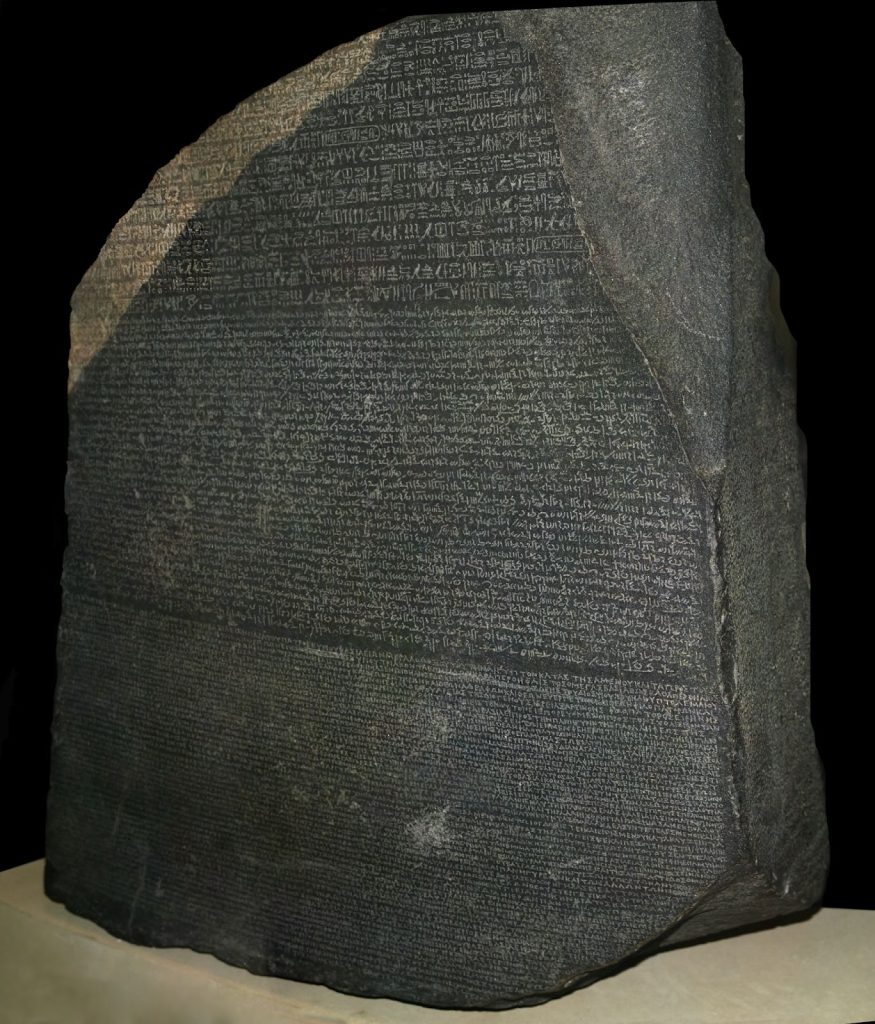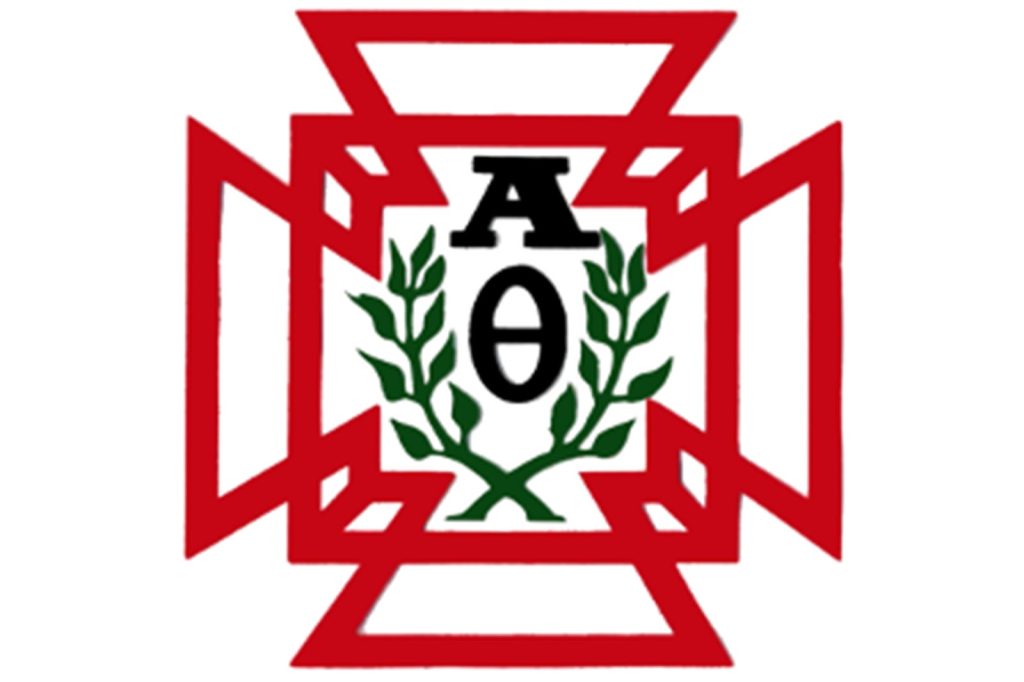The Greek alphabet is a classical writing system with a legacy thousands of years old.
Historians place the alphabet’s development at around 1000 BCE, or more than 3000 years ago. Impressively, this writing system has been used in one form or another ever since its invention.
All other European alphabets have their roots in the Greek system. In fact, the word “alphabet” was named after the first two Greek letters.
The Greek alphabet has developed deep symbolism since its inception. Greek letters are used in math problems, fraternity names, military lingo, and many other applications—including logo design.
Explore the Greek alphabet’s history, see examples of its modern usage, and learn how to capitalize on its symbolism in your own designs.
The Origins of the Greek Alphabet
The ancient Greek alphabet was first used around 3000 years ago, or 1000 BCE. This was before many developments associated with the Classical Age of Greece. If you’re a little rusty on your history, here’s a timeline of some major Mediterranean events of this period.
- 1300-1200 BCE: Trojan War believed to occur
- 1200 BCE: Mycenean civilization collapses
- 1200 BCE: Sea Peoples attack Egypt and coastal areas
- 1000 BCE: Greek alphabet developed
- 900s BCE: Sparta and Corinth are founded
- 900-700 BCE: Homer is presumed to be active
- 776 BCE: the first Olympic games are held
- 753 BCE: Rome is founded
- 700s BCE: Latin alphabet developed
- 600s BCE: Arabic alphabet developed
- 570s BCE: Pythagoras is born
- 508 BCE: Athens founded
- 420s BCE: Plato is born
- 356 BCE: Alexander the Great is born
- 200-100s BCE: Hebrew alphabet developed
- 146 BCE: Rome conquers the last Greek city-state
As you can see, the Greek alphabet predates many foundational events of European history. It’s been around long enough to influence all the other European languages and written alphabets.
But the Greek alphabet wasn’t invented from scratch. Instead, it was modified from the Phoenician alphabet, which was itself modified from the North Semitic alphabet.
How did the Greek alphabet become such a cultural standard? The Phoenicians and other civilizations had used writing to communicate and store information before the Greeks developed their alphabet.
One explanation for the Greek language’s longevity is that early Greeks purposefully made it easy to use. They expanded upon the Phoenician system by adding vowels, which helped people understand and pronounce the written language.
The language was also standardized across Greek society when the city-state of Athens declared a certain branch as its official language. This cut down on regional variances and helped what we know as the classical Greek alphabet spread throughout society.
The Modern Greek Alphabet
The modern Greek alphabet has 24 letters, including 7 vowels. The characters have the same names and similar usages to the classical Greek letters.
Many modern letters have an updated design reminiscent of the Latin alphabet. Some of these shapes look identical to letters in English and other languages. However, others retain a more classical look and feel.
Letters in The Greek Alphabet
The Greek alphabet’s 24 letters all have names. Each one can be written in the ancient style as well as in modern Greek.
Some of the ancient forms are still used in science, medicine, and mathematics notations. Explore Greek letters to learn about their forms, shapes, and symbolism.
Alpha, A, ɑ
Alpha is the first letter of the Greek alphabet. The modern Greek character looks like the letter A from the Latin alphabet.
However, the classic Greek alpha has a round swooping shape that can be drawn in a single continuous stroke. Alpha is associated with being the first, best, strongest, and most elite.
The Alpha logo uses a question mark that resembles the sweeping curve of the classic Greek letter.
Beta, B, β
Beta is the second letter in the Greek alphabet. The word “alphabet” is a portmanteau of Greek’s first two letters, alpha and beta. This modern character resembles the Latin letter B while the traditional letter features an extended descender and bowls that curve smoothly from the stem.
Beta’s associations with being secondary sometimes include a sense of inferiority or submissiveness. It’s also used to describe incomplete products that are still in a testing stage.
Gamma, Γ, Ɣ
The third letter in the Greek alphabet, gamma is used in physics, math, and other technological fields to represent radiation or variables. The classic yellow and black radiation warning represents gamma rays.
The modern character is one Greek’s most minimal characters. It features a single stem and an arm at a right angle. It almost resembles a backward 7. Interestingly, gamma is the origin of the letter G.
Delta, Δ, δ
Delta is the ancestor of the letter D. The fourth letter in the Greek alphabet takes a triangle shape in modern Greek.
It’s frequently found in college fraternity and sorority names and is also used to represent change in math and physics.
The ancient delta character is a rounded shape with an ascending angular stroke at the top. Fitting, the Tri Delta sorority uses three triangles in its logo.
Epsilon, E, ε
Epsilon is the fifth letter in the Greek alphabet. The modern character is drawn like a Latin E, with a full-length stem and three arms extending to the right. The classical epsilon symbol is simply two stacked counters that open to the right. Epsilon is often used to denote the fifth item in a ranked list: for example, the fifth finisher in a race could be described as the epsilon competitor.
Zeta, Z, ζ
Zeta is the sixth letter in the Greek alphabet. Its modern character is drawn like the Latin character Z, with two horizontal arms connected by an angled stem. This can be confusing to speakers of other languages since Z is the last letter in many alphabets. The classical Greek zeta has a top arm connected to a fluid stem and tail that follow the same path as the modern Z.
Eta, H, η
The seventh letter in the Greek alphabet, the modern Eta looks like the Latin letter H: it has two upright stems connected by a short horizontal arm. The classical eta is drawn more like the modern lowercase N. Its distinguishing feature is a stem that reaches the descender line.
Theta, Θ, ϴ
Theta is the eighth Greek letter and at one time was pronounced as a “th” sound. The ancient Greek theta was drawn as an oval with a horizontal arm that touched both sides.
Modern Greek uses a similar design. However, the arm is now floating and is disconnected from the surrounding oval. Theta is used as a variable describing resistance in medicine, electrical engineering, and materials science. It’s also a frequent part of fraternity and sorority names.
The Alpha Theta house at Dartmouth University features both an alpha and a theta in its logo.
Iota, I, Ɩ
Currently, the Greek letter iota has a similar shape to the Latin letter I. The modern character is a single, sans-serif stem. The classical version of the character was more stylized with a tail curving to the right. The iota influenced the letters L, J, and Y. It’s associated with small measurements and small amounts.
Kappa, K, ϰ
The Greek letter kappa gave rise to the Latin letter K. This relationship is readily apparent just by looking at the letters. The modern kappa is identical to a Latin K. The classical kappa was also similar to today’s K shape. It was often drawn as a smaller K, sometimes with more curves to the arms.
Lambda, Λ, λ
Lambda is the 11th letter in the Greek alphabet. This letter is the ancestor of the modern Latin character L. The ancient Greek character featured a short diagonal stroke that connected to a longer, curved stroke. This symbol is still used in math, physics, linguistics, and bacteriology to represent variables, symbols, and types of bacteria. The modern lambda resembles an upside-down V.
Mu, M, μ
Mu, the 12th letter in the Greek alphabet, is the precursor to the Latin letter M. The modern Greek character is drawn in the same way as the letter M: two vertical stems connected with two diagonal strokes that meet at the baseline. In ancient Greek, mu was drawn with a stem that reaches the descender. This stem is connected to an open bowl with a top-facing aperture, giving the overall effect of a backward lowercase u.
Nu, N, ν
Nu is the 13th letter in the Greek alphabet. In modern usage, nu looks like the Latin N. The character has two vertical stems connected with a diagonal stroke that goes from the top left to the bottom right. The ancient Greek letter nu was drawn more like a modern lowercase Latin V.
Xi, Ξ, ξ
The letter xi is the 14th letter in the Greek alphabet. This character is rarely used in modern Greek, mainly appearing in religious texts. The modern letter is drawn as three stacked horizontal strokes. The center stroke is slightly shorter than the other two. The modern character is clearly a simplified version of the ancient Greek xi, which featured the same horizontal strokes connected by curves.
Omicron, Ο, ο
Omicron, the 15th letter of the Greek alphabet, might be familiar to modern audiences because it was used to name a COVID-19 variant in 2023.
Both the modern and ancient Greek omicron characters look like the Latin letter O. The modern omicron is typically written as an oval or circle reaching from the cap line to the descender line.
The ancient Greek omicron was simply a smaller version of this same circle.
Pi, Π, π
Pi is another Greek letter that’s used in modern math, science, and related fields. As the 16th letter in the Greek alphabet, pi influenced the development of the Latin letter P.
The modern letter looks like a vertical rectangle without the bottom line. The ancient Greek pi is the same symbol used to represent the ratio of the circumference of the circle to its diameter. This symbol has a short horizontal stroke with two curved stems beneath it.
Rho, Ρ, ρ
The Greek letter rho is the 17th letter in the alphabet. It also represents the number 100 in the Greek numerical system. The modern Greek letter rho resembles the Latin capital letter P, with a vertical stem attached to a bowl at the top. The ancient Greek rho looks similar to a lowercase Latin P with a curved shoulder instead of an angular point.
Sigma, Σ, σ
The 18th letter of the Greek alphabet, sigma influenced the use of Latin C and S sounds. The modern Greek sigma has two horizontal arms connected by diagonal strokes meeting at the midpoint. Modern math uses sigma to note summing a group of values. The ancient Greek sigma looked like a lowercase Latin O with a short arm extending to the right.
Tau, Τ, τ
The Greek letter tau is the 19th letter in the alphabet. Both the ancient and the modern versions of tau look like the modern Latin letter T. This makes sense since tau was an early influence on T. The modern tau looks like the capital Latin T while the ancient Greek tau had a horizontal arm above a single curved tail.
Upsilon, Υ, Ʊ
The Greek letter upsilon, which is the 20th letter of the alphabet, influenced the Latin letter U. Its ancient form has a semicircle shape that looks like an upside-down omega symbol. The modern Greek upsilon looks like a capital Latin Y.
Phi, ɸ, Φ
Phi is the 21st letter in the Greek alphabet. The ancient Greek letter was a closed loop with a vertical stroke. The modern letter has a similar design but slightly different proportions, using a smaller loop and a longer stroke. Phi is used in math, physics, and engineering to represent the golden ratio, proportion, and other concepts.
Chi, ᙭, ꭓ
Chi, the 22nd letter in the Greek alphabet, is the source of the Latin letter X. The modern Greek character for chi looks like the Latin X, featuring two overlapping, opposing diagonal strokes. The ancient character for chi resembles a lowercase X, often with curved tails on one or both strokes. The ancient chi symbol is used in several scientific and mathematical fields.
Psi, Ψ, Ⲯ
Psi is the second-to-last letter in the Greek alphabet. The modern and ancient versions of the character both resemble trees or flowers, featuring a tall central stem and a curved arm on each side. Modern Greek rarely uses the character psi, which is mostly found in traditional church texts.
Omega, Ω, ⍵
Omega is the 24th and final letter of the Greek alphabet. Omega is often associated with the last, final, or ultimate concept.
When something is described as “alpha and omega,” it includes everything possible. The ancient Greek omega symbol is two looping, connected open counters.
Modern omega is drawn as a circle open on the bottom, with a serif-style leg on each open side.




















